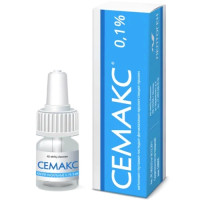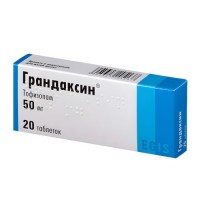PHEZAM® (Piracetam 400 mg + Cinnarizine 25 mg) 60 capsules
- $20.00
What Is PHEZAM® (Fezam)?
PHEZAM® is a specialized medication that combines Piracetam (400 mg) and Cinnarizine (25 mg) in each capsule. It is widely used to enhance cognitive abilities, improve brain blood circulation, and address symptoms related to inner ear disorders.
This dual-action formula supports memory, emotional stability, and helps manage dizziness or nausea caused by various conditions.
By pairing the nootropic effects of Piracetam with the vasodilating benefits of Cinnarizine, PHEZAM® serves as an effective treatment for brain and vestibular health.
It is also recognized for its ability to prevent motion sickness and aid in recovery from cerebrovascular conditions such as strokes.
What Are the Uses of PHEZAM®?
PHEZAM® is recommended for the treatment of a variety of neurological and vestibular conditions, such as:
- Chronic cerebral circulatory insufficiency due to atherosclerosis or hypertension.
- Recovery from ischemic strokes or angiodystonic brain conditions.
- Post-traumatic brain conditions, including cognitive or emotional deficits.
- Encephalopathies of different origins.
- Inner ear disorders (labyrinthopathies) causing vertigo, tinnitus, nausea, or vomiting.
- Meniere’s syndrome.
- Prevention of motion sickness (kinetosis).
This medication addresses both the neurological and inner ear causes of symptoms, providing a comprehensive therapeutic approach.
What Is the Composition of PHEZAM®?
Each capsule of PHEZAM® contains the following:
Active Ingredients:
- Piracetam (400 mg): A nootropic agent that improves cognitive function by enhancing brain metabolism and increasing blood flow to the brain.
- Cinnarizine (25 mg): A calcium channel blocker that improves circulation in the inner ear and brain, reducing symptoms like dizziness, tinnitus, and nausea.
Inactive Ingredients:
- Lactose Monohydrate: Used as a filler and stabilizer.
- Colloidal Silicon Dioxide: Acts as an anti-caking agent to ensure consistent capsule quality.
- Magnesium Stearate: Serves as a lubricant to aid in capsule manufacturing.
Capsule Shell:
- Titanium Dioxide (E171): Provides the white color to the capsule.
- Gelatin: Used to form the capsule structure.
What Precautions Should Be Taken Before Using PHEZAM®?
Before starting PHEZAM®, certain factors must be considered to ensure safety and efficacy:
Contraindications
PHEZAM® should not be used if you have:
- Hypersensitivity to Piracetam, Cinnarizine, or other components of the medication.
- Severe kidney dysfunction.
- A history of hemorrhagic stroke.
- Lactose intolerance, Lapp lactase deficiency, or glucose-galactose malabsorption.
- Pregnancy or breastfeeding.
- Children under 6 years of age.
Special Warnings
- Use cautiously in patients with Parkinson’s disease or elevated intraocular pressure.
- For mild to moderate kidney impairment (creatinine clearance below 60 mL/min), dosage adjustments or extended dosing intervals are required.
- Liver function should be monitored in patients with liver dysfunction during treatment.
Alcohol and Drug Interactions
Avoid alcohol during treatment, as it may amplify the effects of the medication. When taken alongside other drugs, PHEZAM® can:
- Enhance the sedative effects of sleeping aids, sedatives, and antidepressants.
- Increase the efficacy of nootropic, antihypertensive, and vasodilator medications.
- Intensify the activity of thyroid hormones, potentially causing side effects such as tremors or agitation.
How Should PHEZAM® Be Taken?
Recommended Dosage
- Adults: 1–2 capsules, three times a day, depending on the severity of the condition. Treatment typically lasts 1–3 months.
- Children (6 years and older): 1–2 capsules, 1–2 times a day.
Administration
- The capsules should be taken orally with water.
- Do not exceed the maximum duration of three months without consulting a doctor.
Missed Dose
If a dose is missed, take it as soon as possible unless it’s almost time for the next dose. Do not double the dose to compensate for the missed one.
What Are the Possible Side Effects of PHEZAM®?
While PHEZAM® is generally well-tolerated, some individuals may experience side effects, including:
Rare but Possible:
- Skin reactions such as rash, itching, or photosensitivity.
- Increased salivation, nausea, or vomiting.
Frequency Unknown:
- Sleep disturbances, restlessness, or agitation.
- Tremors or increased muscle tone with prolonged use, particularly in older patients.
- Digestive discomfort, including epigastric pain or dyspepsia.
If side effects occur, consult a healthcare provider immediately.
How Should PHEZAM® Be Stored?
To maintain its efficacy, store PHEZAM® under the following conditions:
- In a dry, light-protected environment at temperatures not exceeding 25°C (77°F).
- Keep out of reach of children.
- Do not use after the expiration date indicated on the packaging.







